Holding a Knife
Preface
I recommend checking out the diagram I used in this page about the parts of a knife. before reading through this.
One of the most important, if not the most important, aspects of using a knife in the kitchen is the way you hold your knife, also known as the grip. A good grip will provide you with confidence, control, and comfort while cutting, and should prevent injury from accidental slips and strain from holding the knife inefficiently. It's also important to know which grip is most efficient for what tasks, as there is no one size fits all grip while using knives.
Chopping and Slicing
The most common cutting tasks will involve chopping or slicing food on a surface in front of you, like a cutting board on a counter. There are three ways I recommend holding a blade while chopping or slicing.
The Pinch Grip
This grip works best on knives that have a decently tall blade, like a chef's knife. I wouldn't recommend using this grip with shorter blades, like paring, carving, or utility knives.
The pinch grip, as the name implies, is done by holding the knife in your dominant hand just in front of the bolster, pinching the blade between the side of your index finger and thumb. The remainder of your fingers firmly hold the handle of the blade. Try to hold the knife firmly enough that it doesn't wobble when you're cutting, but not so tightly that you strain your hand and forearm muscles.
Blade Balance
A unique factor of the pinch grip is the ability to hold the knife more dynamically - when performing chopping and slicing, less effort will generally be needed if you hold the blade around the area of the center of balance for the knife. Try to find the place on the knife's spine where, when pinched, the knife doesn't feel like it wants to tip up or down. Most knives are generally centered around the bolster of the blade, but some heavier handled knives can have handles that are heavier than the blade, like my 8 inch WÜSTHOF chef's knife. I find that pinching the blade about half an inch in front of the bolster makes cutting tasks less straining.
Pinch Grip Inside Perspective
Pinch Grip Outside Perspective
The Handle Grip
I personally find that the grip isn't as stable or controlling as the pinch grip, but there are certain knives and cutting situations where the pinch grip can't work, usually due to blade height at the bolster.
The handle grip is done by grabbing the knife by the handle, in a fist shape, behind the bolster. This is most likely the way you usually pick up and use a knife, which is fine, and it does work. I find this grip useful if I'm going to be cutting items that are very thick and will run into my hand if I'm using the pinch grip, like when slicing a roast, or when the blade isn't tall enough to allow me to pinch it comfortably without risking my fingers getting near the cutting edge of the blade.
Handle Grip Inside Perspective
Handle Grip Outside Perspective
The Finger Grip
There is a VERY GOOD reason that many professionals and enthusiasts alike highly recommend not using this grip. It is inherently unstable and you should only use it in specific circumstances. If you're using this grip, please do so SLOWLY and with GREAT CARE. It's very easy to cut yourself with this grip! If this is the grip you use for everything, sharpen (or buy a sharper knife) and change your grip.
The goal of the finger grip is to give extra power while cutting. I commonly use this to do the initial cuts of an onion that I'm dicing. It can be difficult to run thick knives cleanly through the onion, and the extra downward pressure can help. This grip is also useful if your knife isn't sharp enough to cut easily, but in that situation I really recommend getting either sharpening your blade, or buying a higher quality blade instead of relying on an unstable grip to do your cutting.The main thing to keep in mind with this grip is that it is inherently unstable, so be super careful when using it. It's very easy for the knife to rotate since your index finger is not controlling the knife, and the added pressure can cause the blade to pivot from side to side very easily. Some of the worst cuts I've gotten while in the kitchen things came from this grip in combination with a dull blade.
This grip is done by holding the knife similarly to the handle grip, except you put your index finger on the spine of the blade, just in front of the bolster. The extra pressure comes from pressing down with your index finger as you cut.
Finger Grip Inside Perspective
Finger Grip Outside Perspective
Paring
Paring involves cutting items that are not on a cutting surface, such as hulling strawberries, cutting items into a pot or pan directly, etc.. See the page that discusses paring for instructions on how to actually pare items.
The Paring Grip
This grip is different in that you hold the knife facing towards you, instead of away, and is usually done holding a paring knife, although you can technically pare with nearly any blade. The knife is held by the handle, facing the user, only supporting the blade by wrapping the fingers around the handle, not including your thumb.
Paring Grip Inside Perspective
Paring Grip Outside Perspective
Paring Grip Using Chef's Knife
While using the paring grip with a larger knife, it's often a good idea to hold the knife towards its natural center of balance, similar to the pinch grip. Note how I hold the blade with my index finger going past the bolster to give myself more knife to cut with, and a more balanced grip.

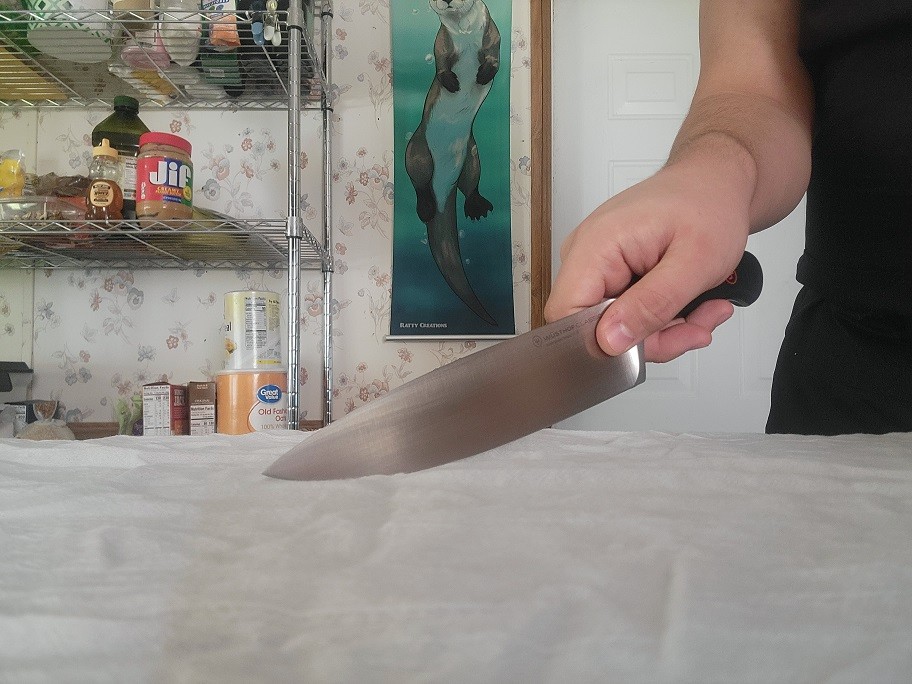
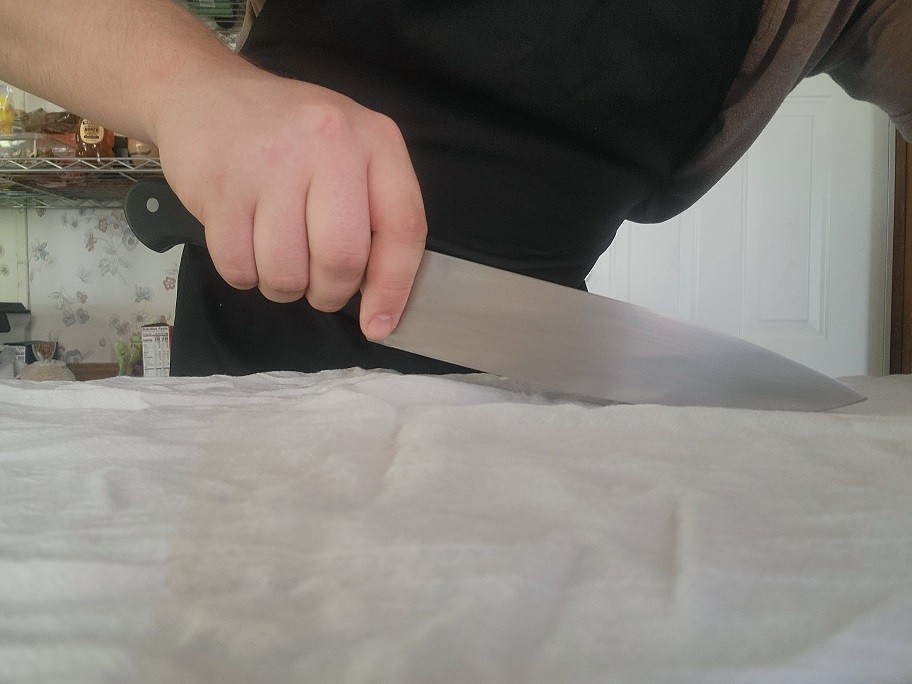
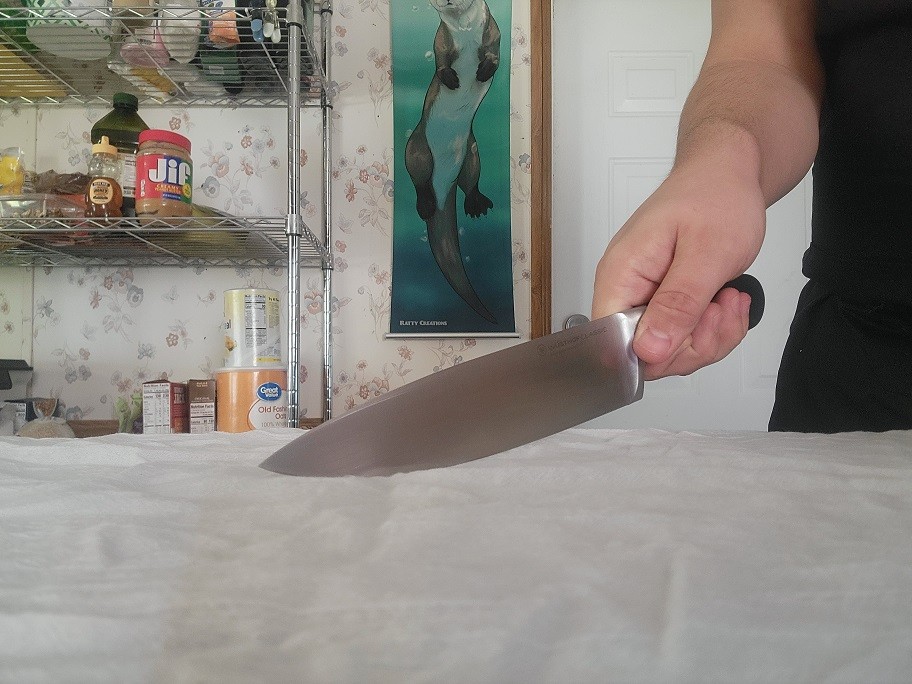
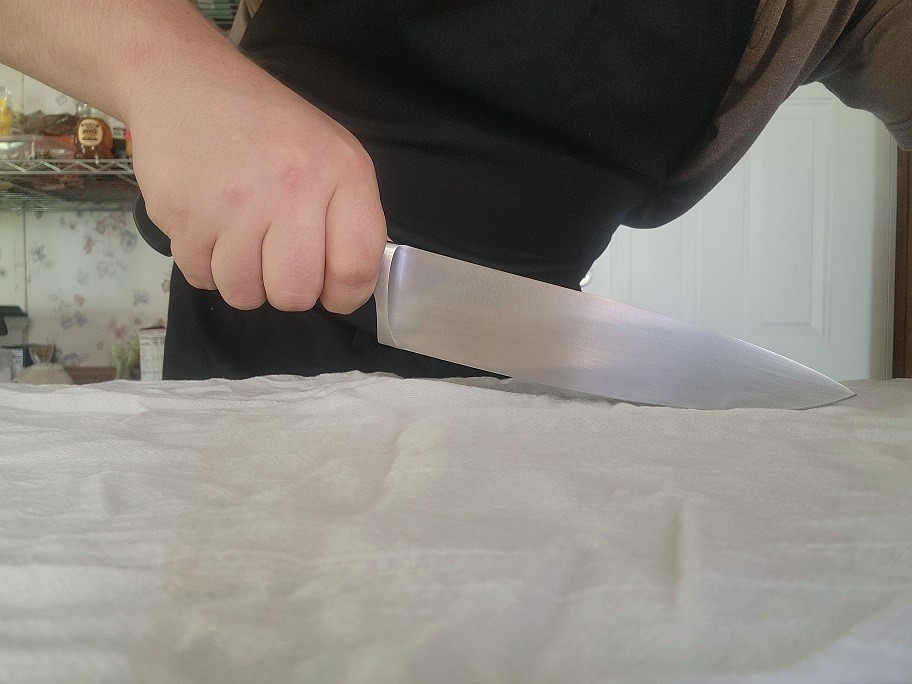
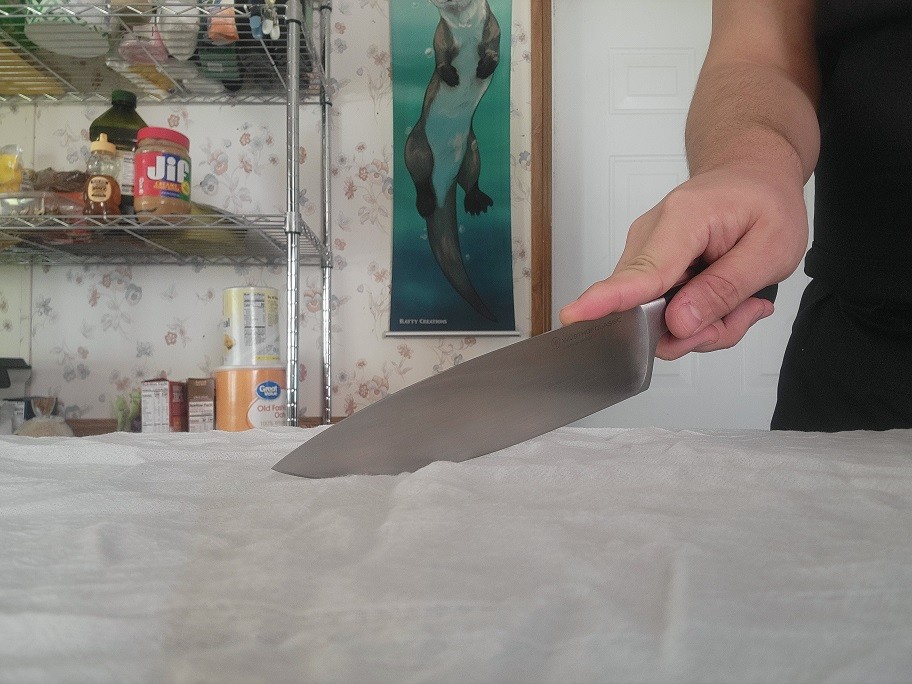
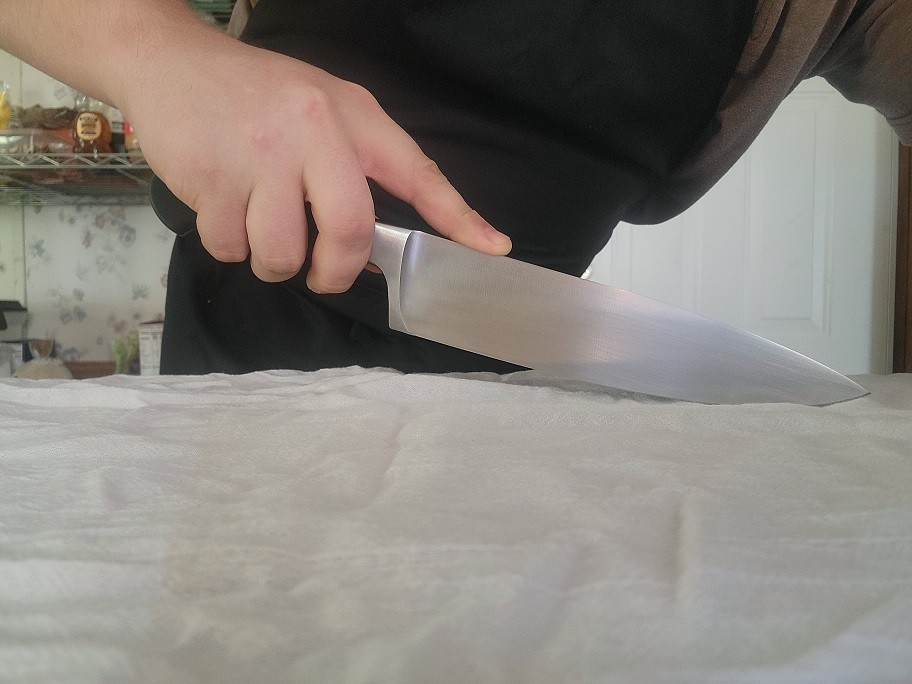
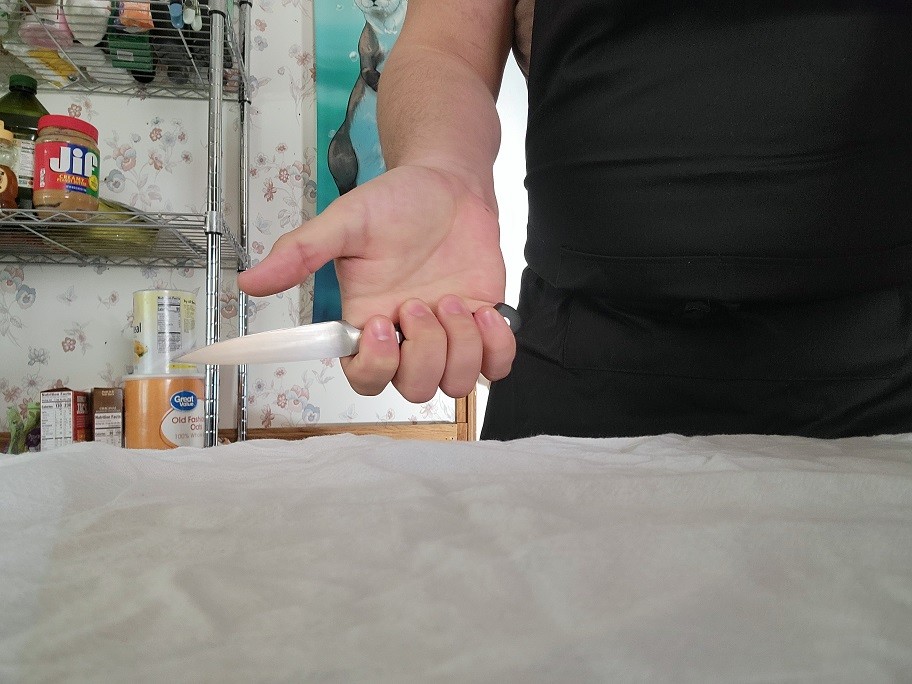
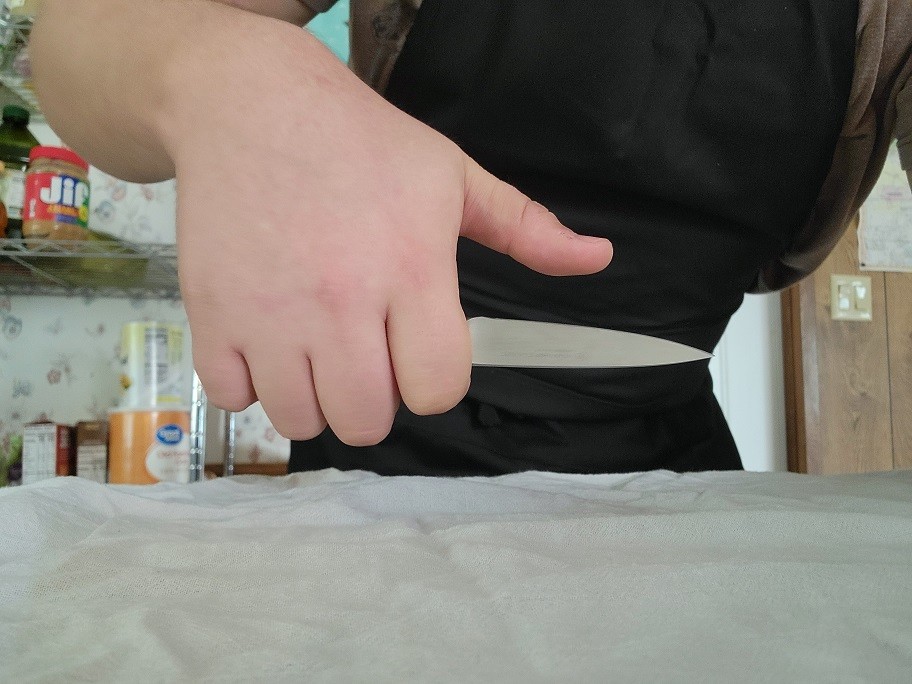
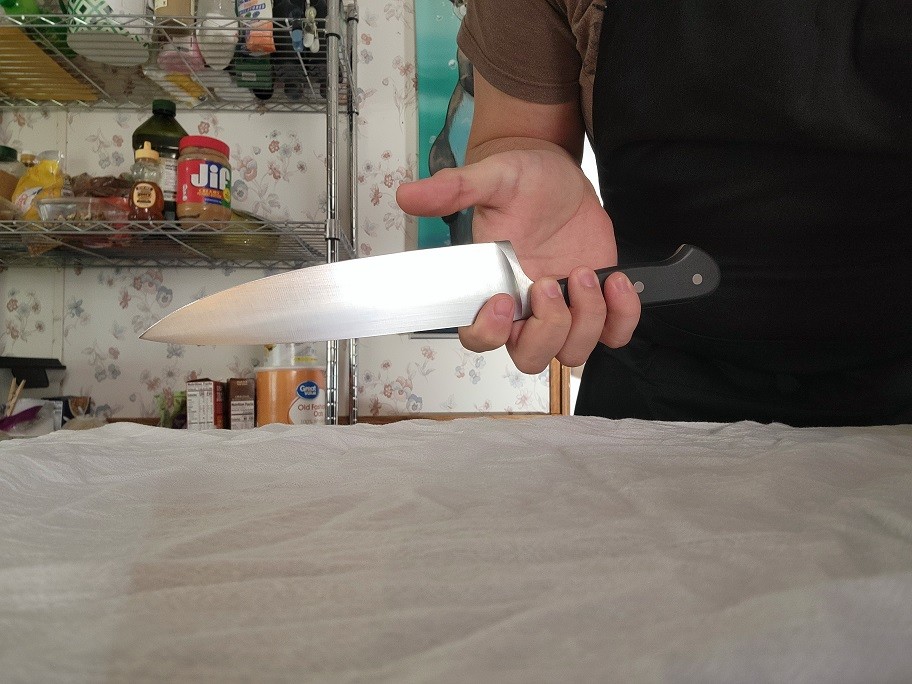
No Comments